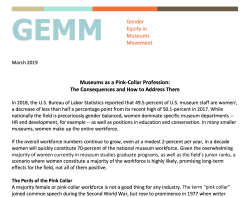10 Tips for More Productive Meetings
Posted: November 4, 2019 Filed under: Leading Across Organizations, Museum, Nonprofit Leadership, Work Habits | Tags: Leadership, museums, nonprofit 2 Comments
My program is searching for a director. As a result, we are currently led by an interim with many other responsibilities. That could have been an awful choice, but we’ve actually benefitted. Here’s why: He’s so busy his time with us must be efficiently managed. As a result, we have suddenly emerged from the meandering, Seinfeldian, nothingness of our former meetings to gatherings that are very focused and blissfully short.
According to the Harvard Business Review for-profit leaders spend up to 23 hours a week in meetings. How horrific is that?And when does anyone get any actual work done? Leadership Matters speaks frequently about the need for diverse voices around the staff table, for equitable discussion, for differing points of view, but how are your meetings discussions? Or are they simply audio book versions of someone’s to-do list?
We all want a better museum workplace, so here are Leadership Matters‘ 10 tips for better meetings:
- Know who needs to be in the room. Just because there are five or 10 people on your leadership team, does everyone need to meet every week?
- And speaking of weekly meetings, do you need them or does your meeting schedule date to some time before email? Consider experimenting with your meeting schedule.
- Make sure your meetings point forward not backward. Meetings are not an opportunity to rehash the week in minute detail. Looking back is helpful if you’re tweaking something to move forward.
- Agendas are like mini-strategic plans. The people around the table should know why they’re there and where they are going. That means crafting your agenda carefully.
- Meetings are not a stage. If leaders (or anyone else) hog the floor, staff cease to speak up. It’s that simple. And you end up talking to yourself.
- Meetings are an opportunity to be fully present. Unless someone on your museum staff is secretly hiding their career as a high-powered surgeon, there is likely no reason they can’t live without their phone for 40 to 60 minutes. Put a basket in the middle of the table or ask staff to turn their phones off and place them face down.
- Start and end on time. Be respectful of your staff’s time and their other obligations, and stick to the allotted time table. If you’re presenting anything that involves IT, for the love of God, set it up ahead of time and test it. No one wants to wait while you experiment with something that’s not working.
- Don’t expect staff to be creative just because you ask. If you want your colleagues to focus on a particular question or problem during a meeting, use a flipped classroom approach and send them whatever materials they need to prepare ahead of time.
- Staff isn’t family. I know there is a school of thought that says colleagues should be like family, but be mindful that’s not a sentiment shared by all staff. Birthdays and holidays or what staff did over vacation are probably better left in the break room.
- Learn to listen. If you’re a leader, you spend a lot of your workweek in your own head, thinking, questioning, moving organizational puzzle pieces around. You also likely move at a frantic pace. Use your meetings to touch base with colleagues. Listen to what they have to say. Don’t ask empty questions. Ask real ones. Listen to the answers, and welcome push back. At the end of the day, you all serve the same organization, and you all want it to be the best it can be.
Yours from meeting heaven,
Joan Baldwin










Do you know that the ad that ran at the bottom of this was about Fox News and showed a photo of Donald Trump???
Karen Wise karen@wisestrategic.com
>
No, I did not. Nor does it show up when I look at it. Thanks though, I’ll see if I can reach WordPress which should be it’s own special hell.
Joan